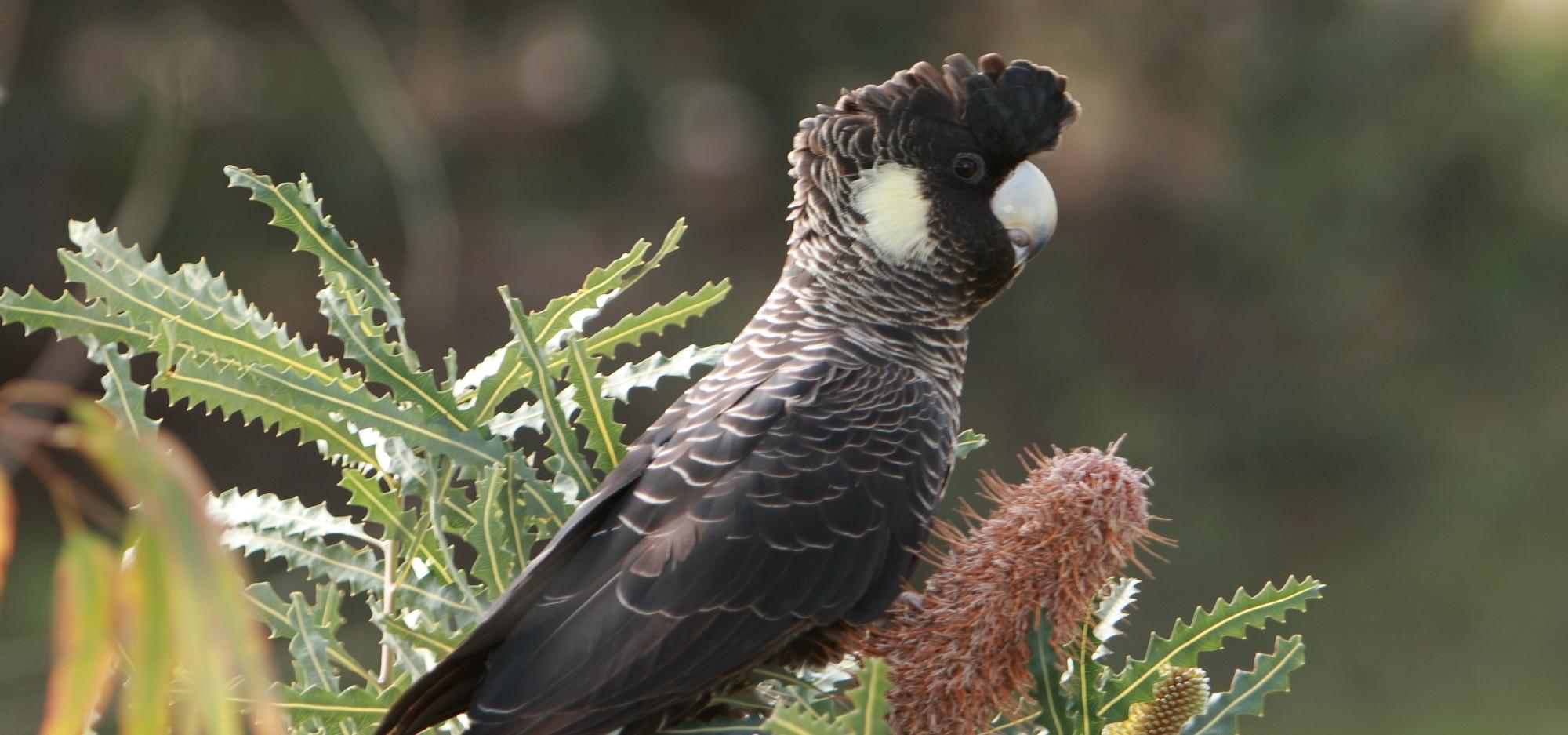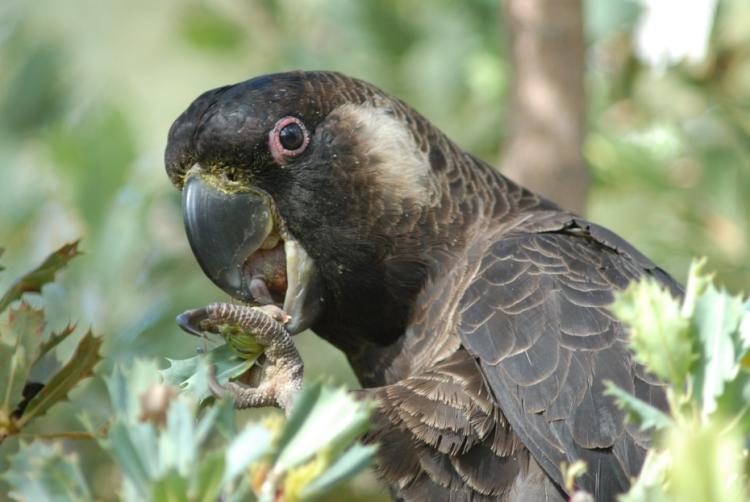
Nyoongar Name: Ngoorlark
Scientific Name: Calyptorhynchus latirostris
Common Name: Carnaby’s Cockatoo
Conservation status: Endangered. This means a species is very likely to become extinct in the near future.
Fun facts
- Carnaby’s Cockatoo, aka Carnaby’s, are a large black cockatoo with white tail feathers. They are one of the three black cockatoo species found in Western Australia.
- They are very social birds and can be seen and heard flying in pairs or in flocks. Sadly, as their numbers have declined, these flocks are much smaller than the ones we may have seen in the past which were so large that that they are said to have blackened the sky like rain clouds – wow, that must have been a sight to see… and hear! Now this magnificent bird is listed as endangered!
- You can often hear their wee-loo call before seeing them.
- They can live between 25–50 years.
- Males have dark grey beaks and pink eye-rings, while females have light grey beaks and light-grey eye-rings. When they find a mate, Carnaby’s stay together for life.
- Established trees and areas of woodland are extremely important to Carnaby’s as they spend most of their time feeding and roosting (sleeping) in the canopy and also using tree hollows to build a nest for their young.
- They only coming to ground to drink or occasionally to forage for seed when food becomes scarce.
- They like to eat the seeds of Banksia, Hakea, Eucalyptus and Grevillea plants which they get to with their very powerful beak. They also eat pinecones, nectar from flowers and insect larvae.
- Female cockatoos can lay up to two eggs but normally only have one egg. Babies are born with white plumage that slowly darkens as they mature (get older) until they reach full adulthood roughly 70 days after hatching.
- Carnaby’s cockatoos travel very large distances to find food and trees for nesting. They migrate back and forth from the Swan Coastal Plain where they feed during the summer in their favoured Banksia and Tuart woodlands.
- In the winter months they fly to the Wheatbelt to breed returning to the same breeding site each year to nest in hollows in old eucalyptus trees.
- They can be easily confused with Baudin’s cockatoo, the other white-tailed black cockatoo found in WA. Both have white tails and cheek patches, but Carnaby’s cockatoos have a shorter upper beak.
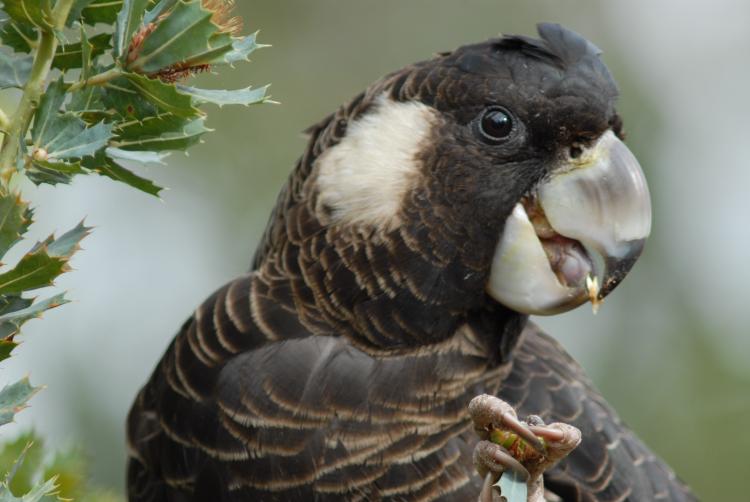
Not So Fun Facts
Approximately 90% of Carnaby’s cockatoo habitat in the Wheatbelt has been cleared, leaving them with less habitat return and fewer options for nest sites.
It is estimated that the Carnaby’s population has decreased in number by over 50% in the last 200 years since European settlement .
Much of the remaining population is now getting old and beyond the breeding age, meaning that there may be very few younger birds to take their place.
It is estimated that there are now between 20,000 to 40,000 left in the wild, which may sound like a lot but not really!
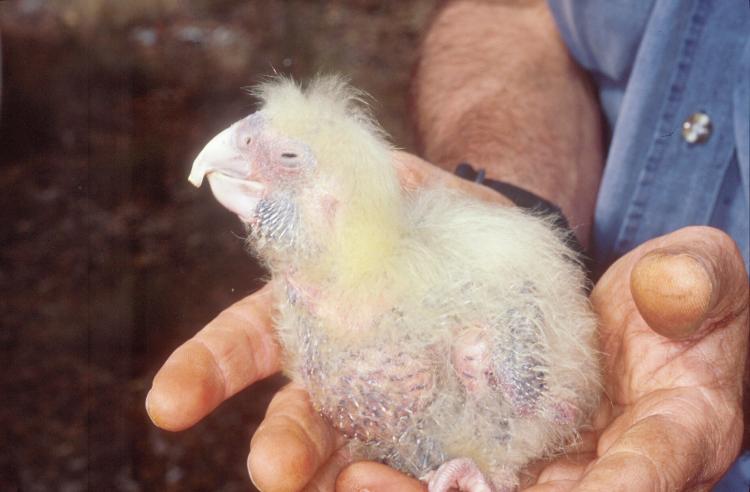
Threats to their survival
There are a number of threats to the survival of Carnaby’s black cockatoo.
Loss of feeding their habitat on the Swan Coastal Plain through clearing for urban development. This leads to their habitat being broken up in to smaller, disconnected areas. Ecologists call this habitat fragmentation. This means that they must travel longer distances to find food and water requiring them to use up more energy trying to find food that is becoming harder to find.
Carnaby’s are also having to fly longer distances to return to suitable breeding sites in the Wheatbelt
Competition for limited nesting hollows with other birds and feral European bees is also a major threat. If they can’t find suitable hollows, they can’t breed successfully.
Carnaby’s cockatoos can often be seen feeding in native bushland which runs along the along the side of roads, but because of their large size, they need time to take off which often results in them getting hit by vehicles, causing injury and sometimes death.
Illegal shooting. They are a protected species so it is against the law to shoot them.
Death and injury resulting from extreme weather events caused by climate change.
Find me in the wild
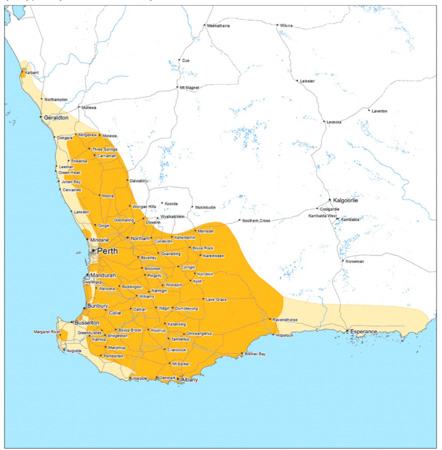
A map of the breeding (orange) and non-breeding (light yellow) range of Carnaby’s cockatoo (SEWPaC, 2012).
Find me at the Museum
You can find me in the Woodland Wonders section within the Wild Life Gallery on Level 3 of WA Museum Boola Bardip.
Image credits: Header image from Adobe Stock. Photographs of adult Carnaby's cockatoos in text by Tony Kirkby, WA Museum. Photograph of Carnaby's cockatoos chick in text by Ron Johnstone, WA Museum. Map courtesy of the Department of Biodiversity, Conservation and Attractions.
